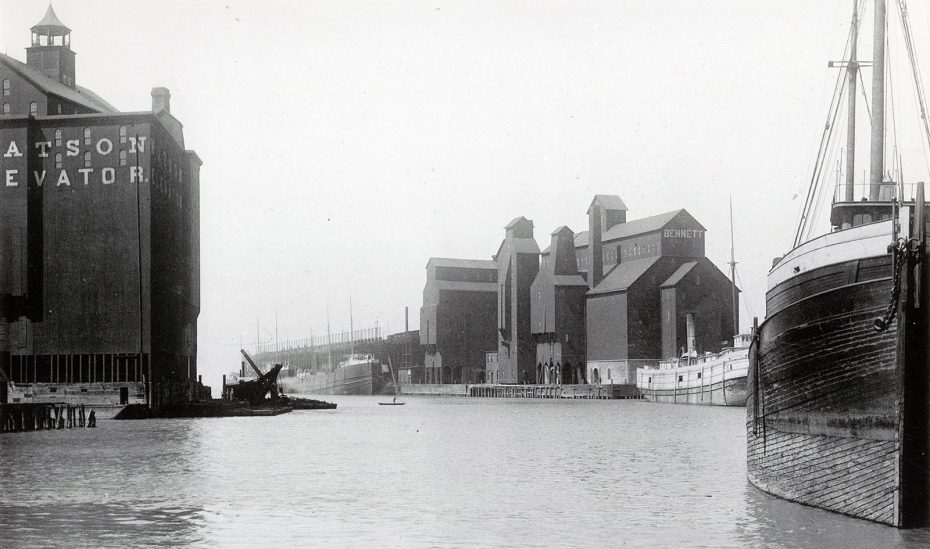 By Steve Cichon
By Steve Cichon
steve@buffalostories.com
@stevebuffalo
In the lower right corner of our 1880 map, at the corner of Chicago and Ohio streets, is the Niagara Elevator and malt house.

It was built in 1868 by the Niagara Elevating Co., and expanded over the course of the next 40 years. In 1880, ground was broken on the Niagara “B” elevator, which was called “the most perfect grain elevator in the world” by the Buffalo Commercial when it opened the following year.

“From present appearances, there will be a revolution in the process of handling grain,” reported the Commercial.
The new elevator had the ability to elevate 200,000 bushels of grain from the hulls of ships every 24 hours, and transfer into boats more than that amount. Tracks connecting to both the Erie and New York Central lines carry cars that could be filled four at a time.
No matter the transfer speed, grain storage was a very dangerous and combustible business—and like many, if not most elevators of the era, the Niagara Elevator was the scene of several fires and explosions, including one fast-moving fire that had the recipe for disaster, but fire tug William S. Grattan was there to knock down the flames immediately.
The Grattan was rechristened the Edward M. Cotter and remains a fixture in the Buffalo River in the shadow of the General Mills plant to this day.
Even without large scale incidents, accidents were frequent and gory. The June 1, 1901, edition of The Buffalo Evening News shared front-page stories about the goings-on at the Pan American Exposition, and announced the regular nightly illumination of buildings would start at 8:15 and the lights would stay on until the grounds closed. It was feared that sudden dimming of the lights might cause panic among the more timid attendees.

Next to that article on the front page was the story of James Lynch, the scooper whose “life was crushed out in an instant,” “caught in the leg of the Niagara Elevator and horribly mangled.”
“Scooper James Lynch was walking though Niagara Elevator B between 11 o’clock and noon, full of health and vigor. Five minutes later, he was snatched by a conveyor belt and carried upward 135 feet through an elevator leg, then he was dropped, crushed, bleeding and lifeless, into a big grain hopper.”
The elevator was the site of a “fierce riot” that made national headlines in 1903.
A group of 200 non-union Italian immigrant workers from the Buffalo Union Furnace Co. were walking past the Niagara Elevator, when one of the unionized grain scoopers yelled out, “Scab!”
What happened next, according to The Buffalo Courier, “Bullets flying in all directions, knives, stilettos, cleavers, and weapons very much in evidence, while people in the neighborhood were hunting for cover.”
A melee broke out, and “45 Italians were arrested for fighting with whites,” according to the Rochester Democrat & Chronicle report. Most were allowed to go on a suspended sentence, but one man was sent to jail for 90 days for possessing a revolver – from which he squeezed off a few rounds during the incident. Another man was held for carrying a dangerous knife. “A stiletto, almost two feet long, more appropriately called a sword,” according to another sensationalized newspaper account.
Today, the site where the Niagara once stood is a part of the new building and revitalization of the Old First Ward along the Buffalo River.












